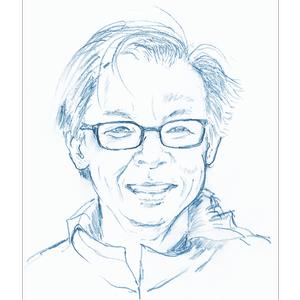Office: MRB 375
Phone: (970) 491-0569
Curriculum Vitae: https://drive.google.com/file/d/1ZRhRAy4Ef86h6k0xWZVquAGmHimolWkv/view?usp=drive_link
Google Scholar: https://scholar.google.com/citations?user=qoY8YnAAAAAJ&hl=en
Education
- B.A.; Chemistry; Franklin and Marshall College
- Ph.D.; Biochemistry, Molecular, & Cell Biology; Northwestern University
- American Cancer Society Postdotora Fellow; Massachusetts Institute of Technology
About
Our laboratory has been recognized for elucidating the structures and structural gymnastics associated with the functions of nucleic acids. More recently, we have pioneered the use of biomolecular halogen bonds to control the structures of proteins and nucleic acids for bioengineering and rational drug design applications. To attack these problems, we apply X-ray crystallography, computational biology, biochemistry, and bioinformatics approaches.
DNA Structure
- In 1979, a left-handed alternative to Watson and Crick's right-handed double-helical B-DNA model was discovered. This structure (called Z-DNA) has now been implicated in a number of different eukaryotic processes, including RNA editing, coactivation of transcription, and large scale-genomic deletions. We have been mapping the occurrence of Z-DNA across genomes of organisms ranging from eubacteria to archae-bacteria to lower and higher eukaryotes. This phylogenomic analysis has provided us with a map of how and where GC-rich transcriptional elements, including Z-DNA have emerged, and suggest a mechanism for the migration of such elements towards the sites transcriptional initiation through functional evolution. We are now applying this strategy to develop phylogenetic maps to relate organisms based on global functional rather than simple sequence information.
- The A-DNA form was determined by Rosalind Franklin soon after Watson and Crick described the now standard B-DNA structure. This underwound duplex is seen in polymerase active sites and DNA-RNA hybrids. Through a series of 13 single-crystal structures, we mapped the B-DNA to A-DNA transition (B2A-DNA), showing the atomic details how each component of the double-helix contorts as it goes through a series of intermediate steps.
- The exchange of genetic material during recombination, DNA repair, or integration of foreign DNAs involves formation of a four-stranded structure (the Holliday junction), which allows information from one double-helix to exchange with an adjacent duplex. We are currently studying the structural determinants for the formation and stabilization of Holliday junctions in crystals and in solution. Using a unique crystal system that accommodates both B-DNA and A-DNA duplexes and the four-stranded intermediate, we have been able to construct a unique phase map that walks through sequence-conformation space in single-nucleotide steps. This has allowed us to develop models for the role that sequence-dependent formation of the Holliday junction plays in promoting recombination.
- Epigenetic modifications to DNA.
Biomolecular Halogen Bonds
- Our lab is the world's expert on the study of halogen bonds in biology. "Halogen bonds", as defined by the IUPAC, are analogous to the better known hydrogen bond. This interaction is unusual in that covalent halogen complexes (involving chlorine, bromine, or iodine) serve as the electropositive Lewis acid that form stabilizing close-range interactions with electron-rich elements (oxygens, nitrogens, sulfurs, and even the negatively charged phosphate oxygens of nucleic acids). Such interactions are prevalent in protein-ligand interactions, and affect the conformations of DNAs and RNAs. Using DNA and protein model systems, we have demonstrated that a halogen bond can be engineered to specifically direct the conformation of a macromolecule and can have relationships that are synergistic or orthogonal to classical hydrogen bonds. We are now applying this interaction as a general tool to control the structures and functions of proteins and to engineer novel enzyme catalysts.
Awards and Academic Recognition:
- Faculty Excellence in Undergraduate Teaching/Mentoring Award, 2023, Dept of Biochem. & Mol. Biology
- NSF Director’s Award for Superior Accomplishment, National Science Foundation
- Scholarship Impact Award, Office of the Vice President of Research, Colorado State University
- Asian Pacific American Culture Center Outstanding Faculty/Staff Award, 2018, Colorado State University
- Special Member, Society of Iodine Science, Japan
- Dean's Award, 2014 Art and Science Juried Exhibition, Colorado State University
- Fellow, International Union of Pure & Applied Chemistry (IUPAC)
- Provost N. Preston Davis Award for Innovation in Teaching, Colorado State University
- Fulbright Grant (U. Strasbourg, France), Franco-American Fulbright Commission
- Researcher of the Year, Sigma Xi, Oregon State University
- Discovery Award, Medical Research Foundation of Oregon
- Milton Harris Award for Basic Research, College of Science, Oregon State University
- Wellcome Travel Fellowship (Dundee University, Scotland)
- James A. Shannon Director's Award, NIH
- L. Carter Award for Undergraduate Teaching (student nominated), Oregon State University
- Junior Faculty Research Award, American Cancer Society
- American Cancer Society Postdoctoral Fellowship
- Kodak Gold Key Award in Photography, Juried Exhibit, William Penn State Museum
Publications
- The Holliday junction in an inverted repeat DNA sequenceProceedings of the National Academy of Sciences, USA, 97, 3971-3976, 2000
- Crystallographic map of the B-DNA to A-DNA transitionProceedings of the National Academy of Sciences, USA, 98, 7265-7270, 2001
- Halogen bonds in biological moleculesProceedings of the National Academy of Sciences, USA. 101, 16789-16794, 2004
- How sequence defines structure: A crystallographic map of DNA structure and conformationProceedings of the National Academy of Sciences, USA, 102: 7157-7162, 2005
- Directing macromolecular conformation through halogen bondsProceedings of the National Academy of Sciences, USA, 104: 6188-6193, 2007
- Phylogenomic analysis of the emergence of GC-rich elementsProceedings of the National Academy of Sciences, USA, 104: 16528-16533, 2007
- Halogen bonds as orthogonal interactions to hydrogen bondsNature Chemistry, 1: 74 – 79, 2009
- Definition of the halogen bondPure and Applied Chemistry, 85: 1711-1713., 2013
- Computational tools to model halogen bonds in medicinal chemistry, Journal of Medicinal Chemistry, 59(5): 1655-1670, 2016
- Hydrogen Bond Enhanced Halogen Bonds: A Synergistic Interaction in Chemistry and BiochemistryAccounts of Chemical Research, 2019

